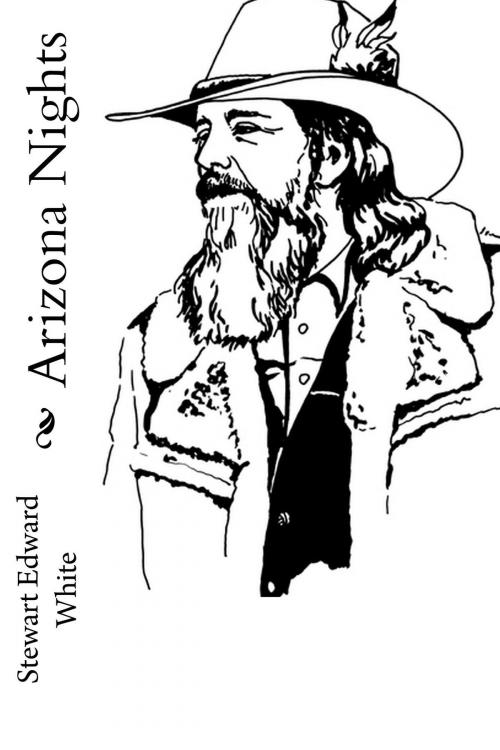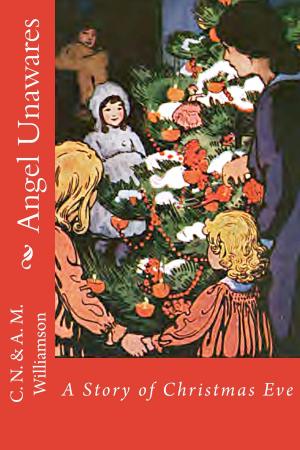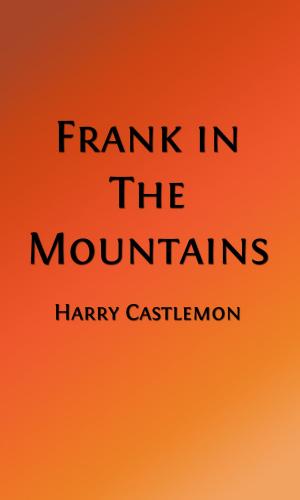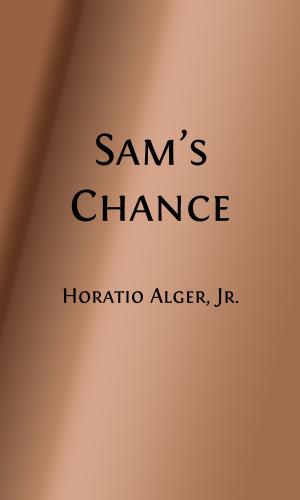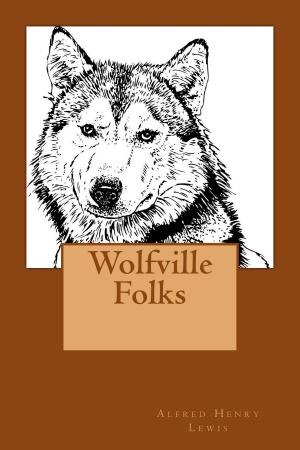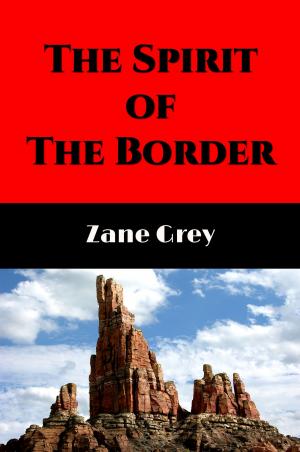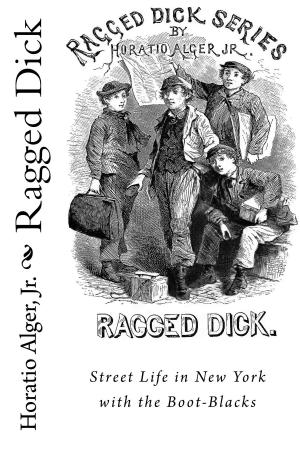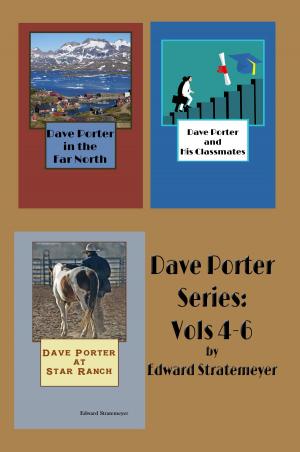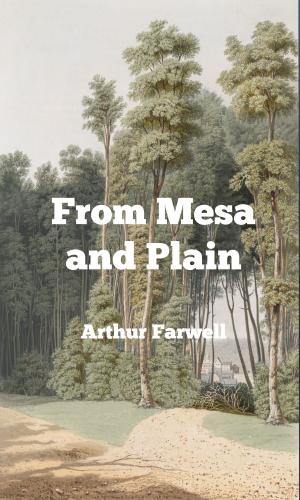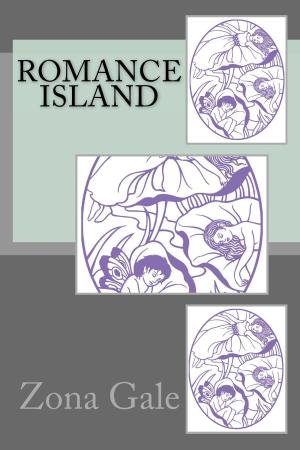| Author: | Stewart Edward White, N. C. Wyeth | ISBN: | 1230000915069 |
| Publisher: | Steve Gabany | Publication: | January 29, 2016 |
| Imprint: | Language: | English |
| Author: | Stewart Edward White, N. C. Wyeth |
| ISBN: | 1230000915069 |
| Publisher: | Steve Gabany |
| Publication: | January 29, 2016 |
| Imprint: | |
| Language: | English |
Tales of Southwestern adventures experienced by gold prospectors, cattle ranchers and others trying to make their way through the 19th century wild west. Stewart Edward White spent time as a cowboy, particularly during cattle round-up times. At night while sitting around the campfire, it was common for cowboys to tell stories and relate their own experiences, perhaps embellished. It is likely that this is the source of White's novel.
Included in this Illustrated Edition of Arizona Nights are all four original illustrations, rejuvenated, and 10 additional, relevant illustrations that are unique to this edition of the book.
Stewart Edward White (12 March 1873 – September 18, 1946) was an American writer, novelist, and spiritualist. He was a brother of noted mural painter Gilbert White.
He was a keen observer of the beauties of nature and human nature, yet could render them in a plain-spoken style. Based on his own experience, whether writing camping journals or Westerns, he included pithy and fun details about cabin-building, canoeing, logging, gold-hunting, and guns and fishing and hunting. He also interviewed people who had been involved in the fur trade, the California gold rush and other pioneers which provided him with details that give his novels verisimilitude. He salted in humor and sympathy for colorful characters such as canny Indian guides and "greenhorn" campers who carried too much gear.
White started out as a Midwesterner, growing up and getting his education in Michigan. But he spent time in Arizona in 1904 and eventually settled in California. Arizona Nights includes a novel-length story by the same name, plus two shorter stories published earlier in magazines. “The Rawhide” appeared in McClure’s in 1904, and “The Two-Gun Man” followed in Collier’s in 1905.
White had a full career as a writer, and this collection of stories is among his first books, written when he was in his early 30s. He was a popular writer. “The Rawhide” was reprinted at least four other times in the pulps from 1925 to 1949. Meanwhile, several of his titles were made into movies. A silent adaptation of Arizona Nights appeared in 1927 and “The Two-Gun Man” became a Michael Curtiz film, Under a Texas Moon in 1930.
Born in Grand Rapids, Michigan, he attended Grand Rapids High School, and earned degrees from University of Michigan (B.A., 1895; M.A., 1903).
From about 1900 until about 1922 he wrote fiction and non-fiction about adventure and travel, with an emphasis on natural history and outdoor living. Starting in 1922 he and his wife Elizabeth "Betty" Grant White wrote numerous books they say were received through channelling with spirits. They also wrote of their travels around the state of California. White died in Hillsborough, California.
Tales of Southwestern adventures experienced by gold prospectors, cattle ranchers and others trying to make their way through the 19th century wild west. Stewart Edward White spent time as a cowboy, particularly during cattle round-up times. At night while sitting around the campfire, it was common for cowboys to tell stories and relate their own experiences, perhaps embellished. It is likely that this is the source of White's novel.
Included in this Illustrated Edition of Arizona Nights are all four original illustrations, rejuvenated, and 10 additional, relevant illustrations that are unique to this edition of the book.
Stewart Edward White (12 March 1873 – September 18, 1946) was an American writer, novelist, and spiritualist. He was a brother of noted mural painter Gilbert White.
He was a keen observer of the beauties of nature and human nature, yet could render them in a plain-spoken style. Based on his own experience, whether writing camping journals or Westerns, he included pithy and fun details about cabin-building, canoeing, logging, gold-hunting, and guns and fishing and hunting. He also interviewed people who had been involved in the fur trade, the California gold rush and other pioneers which provided him with details that give his novels verisimilitude. He salted in humor and sympathy for colorful characters such as canny Indian guides and "greenhorn" campers who carried too much gear.
White started out as a Midwesterner, growing up and getting his education in Michigan. But he spent time in Arizona in 1904 and eventually settled in California. Arizona Nights includes a novel-length story by the same name, plus two shorter stories published earlier in magazines. “The Rawhide” appeared in McClure’s in 1904, and “The Two-Gun Man” followed in Collier’s in 1905.
White had a full career as a writer, and this collection of stories is among his first books, written when he was in his early 30s. He was a popular writer. “The Rawhide” was reprinted at least four other times in the pulps from 1925 to 1949. Meanwhile, several of his titles were made into movies. A silent adaptation of Arizona Nights appeared in 1927 and “The Two-Gun Man” became a Michael Curtiz film, Under a Texas Moon in 1930.
Born in Grand Rapids, Michigan, he attended Grand Rapids High School, and earned degrees from University of Michigan (B.A., 1895; M.A., 1903).
From about 1900 until about 1922 he wrote fiction and non-fiction about adventure and travel, with an emphasis on natural history and outdoor living. Starting in 1922 he and his wife Elizabeth "Betty" Grant White wrote numerous books they say were received through channelling with spirits. They also wrote of their travels around the state of California. White died in Hillsborough, California.
